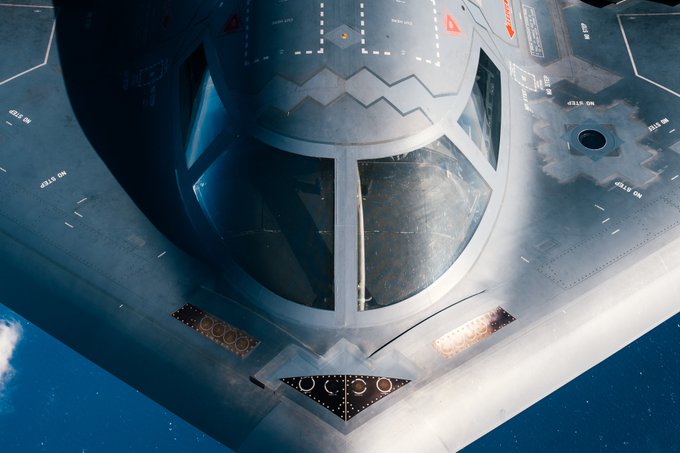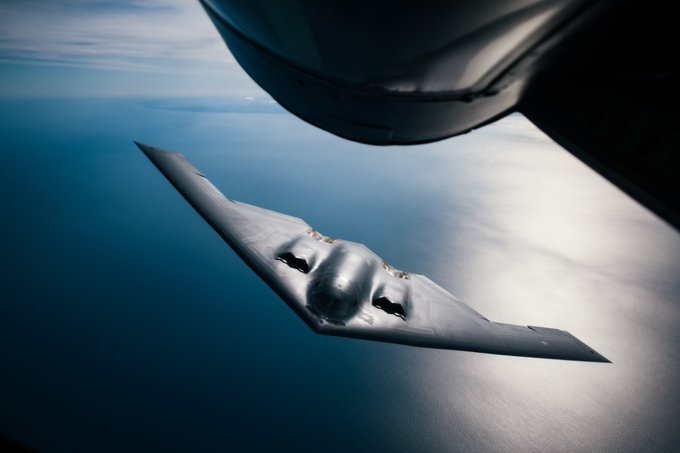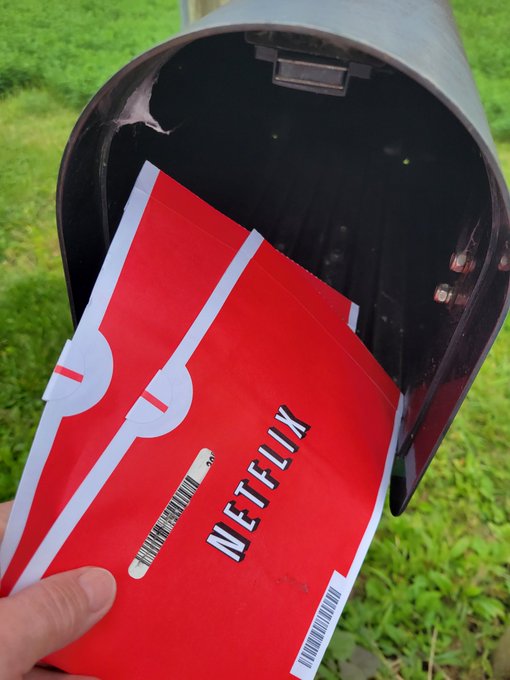Everybody makes mistakes, but even some of the smallest slip ups can have colossal consequences that end up costing an absolute fortune! So, following on from Part 1 and 2, here’s even more massive mistakes with price tags that’ll blow your mind.
Nanfang’ao Bridge Collapse
The Nanfang’ao Bridge was an arch bridge that linked two sides of Taiwan’s Nanfang’ao fishing port. But the 460 feet long structure was struck by a monumental catastrophe on October 1st, 2019.
As an unsuspecting oil tanker passed over it, the entire bridge suddenly warped and collapsed 60 feet into the waters below! The tanker looked briefly like it was going to make it, but it too was sent hurtling into the port.
The moment a bridge collapsed into a harbour in Taiwan by CNA As it fell, three shipping boats were crushed beneath tons of falling steel and concrete, while 500 others were trapped inside the harbor. The collapse cost the lives of 6 fisherman with a further 10 people injured, but the price of that crisis would soon rise even higher.Because the bridge was just 20 years old,
an investigation was launched into the cause of its collapse. At first, many blamed the wind and rains of a typhoon that had struck the harbor several days before, but it was soon revealed that that accident had been years in the making.
Rain and saltwater had leaked into the anchoring mechanisms over the years, causing its metal to rust away. Steel cables in some places were so badly corroded, cross sections revealed they were just 22% functional!
And to make it all worse, no inspections had been carried out on the bridge for over 4 years. It was soon uncovered that poor bridge management was responsible for missing those flaws in inspection reports, leading to the catastrophic collapse. The accident ultimately cost the government over $160,000 in compensation, and the estimates for a replacement bridge started at an eye watering $16.8 million. But that has quickly climbed to $29.3 million as more safety measures will be put in place, all to ensure an avoidable disaster like that doesn’t happen again!
Hubble Mirror Fiasco
In April 1990, after decades of planning and work, the famous Hubble Telescope which at the time was worth $1.5 billion was launched into space. It was designed to send back images to earth of far flung stars and galaxies, but there was just one problem; The images were coming back grainy. It was like they’d all been taken on a toaster!
NASA eventually established that the 7.8 ft primary mirror of the telescope was actually the wrong shape. It had been built by the Perkin Elmer Corporation, and the problem was traced back to a calibration issue in their mirror making equipment.
Now, to make a giant,
perfectly parabolic and lightweight mirror is no easy feat. First, chunks of borosilicate glass are melted into a mold over the course of a week. Then, over three months, the glass is spun and cooled from a temperature of 1200°C to 650°C. Finally, the mirror is ground and polished to an accuracy of 20 nanometers, which can take more than 2 years to complete!
Making the mirrors for the Giant Magellan Telescope at the University of Arizona by U of A Research & Partnerships But a calibration issue at that stage meant the Hubble’s mirror was off by just one 50th the thickness of a human hair! It may not sound like a lot, but for that colossal $1.5 billion price tag, NASA were not happy. Replacing the mirror was hugely impractical, so instead, NASA designed a corrective lens for the Hubble a bit like how glasses correct people’s vision. The Corrective Optics Space Telescope Axial Replacement instrument or COSTAR for short was delivered and installed in 1993 by a separate expedition. The costly mistake leading to COSTAR’s development ultimately set the entire project back a further $50 million! But for clear pictures, I’d say that fix was priceless!
NOAA Satellite Mishap
In 2003, a costly operation at Lockheed Martin Space Systems Company really went sideways. The company had been tasked by NASA to work on the NOAA Prime Weather Satellite, a $233 million piece of space technology filled with meticulously calibrated instruments.
But disaster struck when workers were carefully turning the satellite into a horizontal position, and the entire structure suddenly toppled over 3ft to the ground. The damage to all those delicate systems was severe, and a full inquiry was launched into the mishap.
Despite the presence of incredibly smart technicians and engineers, there was a serious lack of procedural discipline throughout the facility. It turned out that while the turn over cart used during the procedure was in storage, a technician removed twenty four bolts which secured the cart’s adapter plate. And all without ever documenting doing so!
The team who then used the cart failed to check the bolts before moving the satellite, and bingo, multi million dollar destruction was born! Lockheed Martin had to dig into the profits it had earned, and with a little help from the government, they both foot the
astronomical $135 million repair bill!
James Howells Threw Away Half A Billion In Bitcoin
When cryptocurrency Bitcoin was first invented in 2008, very few people saw the value in it. The decentralized digital currency hit the market with a value of just .0008¢ per Bitcoin, and people were pretty slow on the uptake. But Englishman James Howells saw the currency’s potential!
The avid IT worker downloaded the software and mined more than 7,500 coins in a short space of time. But by 2010, bitcoins still weren’t worth much at just 8¢ each. So, James stored the code required to spend the coins he had mined away on an external hard drive and briefly forgot about it. But in 2013, he accidently threw the hard drive away in what would turn out to be a very costly bout of spring cleaning! Unfortunately for him, 2013 was the year Bitcoin really started to take off! By April, it had reached a peak of $220 per coin making James’ stash worth a phenomenal $1.65 million!
But
he realized his mistake all to late. He desperately began combing nearby landfills and dump sites in an attempt to retrieve his missing millions but has never recovered the lost drive.
This man threw away $6 million worth of Bitcoins - BBC NEWS by BBC News To really rub salt in the wound, on December 17, 2017, Bitcoin’s prices peaked at an unbelievable $19,783 per Bitcoin. That meant, somewhere in an English landfill, an unsuspecting old hard drive was actually worth a staggering $148 million! And by 2030, that price is expected to climb to $387,000 per coin, meaning it could be worth around $3 billion.
When Harry Potter Was Rejected By 12 Publishers
Just about everyone on the planet has heard of the incredibly successful Harry Potter fantasy book series. While those stories of the wizarding world have brought magic to the masses, their success is a painful reminder of a huge mistake made by several publishing companies.
The first manuscript of ‘Harry Potter and the Philosophers Stone’ was conjured up by author JK Rowling in 1995. It had taken her 5 grueling years to put what was in her head to paper, but that would turn out to be the easiest part!
Her literary agent approached a number of publishing houses, who you’d have thought would have been fighting over the chance to print it. But, amazingly,
12 different houses rejected the manuscript before it eventually ended up with Bloomsbury.
Initially, Bloomsbury printed just 500 copies. But by the end of 1997, demand for the book was so high that that figure skyrocketed to 70,000 copies! It became an international best seller and was soon converted into a well loved film series which only fueled ‘Harry Potter’ fever. By 2018, 500 million books had been sold worldwide, and the entire Harry Potter franchise was worth a breath taking $25 billion!
While the series has concluded, Harry Potter is still very much the jewel of Bloomsbury’s publishing crown, helping it pull in over £162 million in 2020 alone. That’s over $200 million! I bet the 12 publishers who turned down that first manuscript must feel sick thinking about how much money they rejected!
Golden Ray Wreck
At 2 A.M on September 8th, 2019, the crew of the South Korean MV Golden Ray, which had been sailing along the Georgia coast suddenly called the authorities. Their 656-ft long transport ship was listing heavily, and their attempts to right it had all failed.
By that evening, the vessel, which had been carrying 4,200 Hyundai cars, had rolled fully onto its port side and was left stranded on the shore of St Simons. A year later in October 2020, salvage operations to section up and remove the massive ship from the shoreline finally began.That involved a Heavy Lift Vessel called the VB-10,000. It used its massive 240-ft high cranes to wrap a 400-ft long anchor chain underneath the wreck and gradually saw it into 8 sections. Each cutaway was then lifted onto a barge, exposing all the sea wrecked cars that had been trapped inside for over a year!
But as fascinating as those cross sections looked, they didn’t expose why the ship had capsized. An investigation was launched,
which discovered that the ship had been listing while it was in the dock loading in vehicles. It was well below its 7,000-car capacity, but instead of taking on an extra ballast to stable the ship, the crew just continued loading.
Eventually, the ship righted itself, but half an hour later following a standard 20-degree maneuver, events took a turn for the worse. It became clear that the ship was not in compliance with established stability codes for large vessels, but it had left the port anyway.That tremendously bad decision, along with the complexity of the wreck, led to a humungous insurance claim of over $400 million. That’s a number big enough to give anyone a sinking feeling!
Red Lobster's Crab Disaster
There’s something about snow crab that Americans just can’t get enough of. Their soft, tender meat has customers paying extortionate amounts for a single serving, something seafood restaurant chain Red Lobster tried to capitalize on back in 2003.
That year, they began offering an "all you can eat crab" promotion for just $22.99. Their internal calculations determined that that price, which was just a few dollars more than their regular $14.99 buffet, was high enough to fuel a tasty profit.
But they were wrong. It turned out that people willing to pay $22.99 were really big fans of snow crab. Red Lobster’s profitable calculations assumed customers would eat up to 2 plates of crab plus other sides and mains. But they were actually eating more than twice that amount on average!That is because crab meat isn’t thick, so customers were able to eat a lot more before filling up. Not only that, but crab is a fiddly food to eat, meaning customers were spending much longer at their tables. So, they really got their money’s worth!
Red Lobster, on the other claw, started hemorrhaging money. They’d inadvertently sparked a huge demand for the legs, which are an import item. That caused the price of the crabs to skyrocket, meaning that to honor the promotion, Red Lobster had to keep buying in snow crabs at increasingly exorbitant prices!By the end of just one quarter,
the company took a massive $3.3 million loss. That triggered a cascade effect, where Wall Street analysts saw the mismanagement mistake and downgraded their stock price, wiping a huge $400 million off the company’s value. That’ll teach them for underestimating the American appetite!
Ariane 5 Flight 501
June 4th, 1996 was a dark day for the European Space Agency. It marked the launch of Europe’s newest un-manned rocket, the Arianne 5, which was a predecessor of the super successful Ariane 4.
It was loaded up with four incredibly expensive satellites and achieved lift off, but 37 seconds in, something went horribly wrong.
Ariane 5 Flight 501, 4 June 1996 by SciNews At an altitude of 2.3 miles, while travelling at the speed of sound, the onboard computer hit the shuttle’s self destruct button. The rocket, along with the four satellites, exploded into an unrecoverable ball of smoke, fire and debris.
The Europeans were, understandably, crushed, but discovered the entire accident was down to a simple coding error. The Ariane 5 reused working software from its predecessor, the Ariane 4. Unfortunately, the Ariane 5’s faster engines exploited a bug that hadn’t been found in previous models.
The numbers the computers were crunching were just too big for them to handle, which crashed all the guidance and altitude systems including the backups! The launcher veered abruptly, and that ruptured essential electrical links that triggered the self destruct sequence.The tiny glitch cost the European Space Agency a total of $500 million, including its incredibly expensive cargo. That’s one small mistake for man, but one huge mistake for mankind!
B-2 Bomber Crash
When it comes to aviation accidents, none can compare to the 2008 disaster of the USA’s B-2 Spirit Stealth Bomber test flight. That state of the art machine was taking off from Guam’s Anderson Air Base when, all of a sudden, the left wing started to dip down dangerously.
Unable to stabilize the craft, both the pilots ejected through the cockpit roof, and the plane crashed and burned a few seconds later. Fortunately, both the pilots survived, but an investigation was launched into what had caused that hi-tech bomber to really bomb!
B-2 crash by stephen trimble
It revealed that the plane’s exposed air-data sensors had been waterlogged by heavy rain prior to its take off. That meant air-pressure readings during its pre-flight check were too high, so the waterlogged sensors were re-calibrated.However, when the pilots turned on the sensor heaters the water evaporated, so while the readings looked normal, they were actually way too low! That incorrect data caused the onboard computer to display the wrong airspeed, so the pilots attempted to lift off at 153 mph rather than the required 166 mph.To top it off, the sensor’s bad air pressure readings adjusted the plane into a sharp 30 degree pitch upwards! Angled way too high and going way too slow, the plane immediately stalled and caused the inevitable crash. But the most serious revelation was yet to come! In 2006, that sensor vulnerability was discovered by aircrew and maintenance staff, but nobody thought to note it down! That communication crash came with a hefty price tag, as the plane had been valued at an abominable $1.4 billion! the US military probably wouldn’t mind that monumental mistake flying under the radar.
Cedar Fire Fiasco
When novice hunter Sergio Martinez got lost wandering in the wilds of Southern California back in October 2003, he was convinced he was going to die. In a desperate attempt to attract the attention of nearby rescue helicopters, he lit two small signal fires amidst the dry brush of the San Diego hills.
While the fire and smoke he made did get attention, it wasn’t for a good reason. The hastily made signal fires accidentally sparked a huge,
uncontrollable wildfire, which was driven across the landscape by the strong Santa Ana winds. Thanks to that, it quickly spread at a rate of 3,600 acres per hour; That’s more than 2,700 football fields of hillside set ablaze every 60 minutes!By the time it was finally contained on November 4th, it had scorched more than 273,000 acres an area of land roughly the same size as Hong Kong! 2,820 homes and buildings were destroyed, and 15 people tragically lost their lives. Even today, it’s widely considered one of the worst wildfires in Californian history.
Despite that, Martinez was only sentenced to serve six months in a work furlough program along with 960 hours of community service. While his stupid decision didn’t cost him all that much, insurance losses were estimated at just over $1 billion in total. That’s around $1.48 billion today! Even if his house wasn’t burned down, he probably moved out of California pretty quickly.
The Kursk Catastrophe
Back in the year 2000, one of the worst peacetime submarine accidents in history took place off the coast of Russia. The 18,000-ton nuclear submarine Kursk was in the middle of a training exercise in the Barents Sea when, all of a sudden, a huge explosion ripped through the area.
It was followed a few minutes later by an even larger explosion, which ripped a massive gash in the forward bow of the 508 ft long submarine! Wrecked by the blasts, the Kursk sank about 350 ft beneath the waves. Of the 118 crew, just 23 managed to survive the initial explosions and were stranded hundreds of feet underwater.But, sadly, international rescue teams couldn’t reach them in time and all the crewmen tragically perished. When pressed for answers about the doomed sub, Russian officials claimed it could have been caused by a collision with a foreign submarine, or an old underwater WW2 bomb.
But the truth eventually surfaced. A Russian Navy board determined that one of the Kursk’s 65-75a super heavy weight torpedoes had leaked and exploded in its chamber from a faulty weld. Like many torpedoes, the 65-76As used hydrogen peroxide as underwater fuel. But that chemical compound can become explosive if it comes into contact with a catalyst. Which, in that case, was the copper lining the torpedo tubes. The explosion of the fuel started a fire, which then caused all ammunition on board to detonate. It took 14 months to drag part of the sub back to the surface in a costly $70 million retrieval mission.
But that was nothing in comparison to the $1 billion it had taken to build the 6 year old submarine! In today’s money, that’s a bank breaking $1.76 billion! Somebody probably got fired for that welding mishap, probably out of the next available torpedo tube.
Deepwater Horizon Oil Spill
On April 20th, 2010, a huge explosion engulfed the Deepwater Horizon offshore oil rig, just 41 miles off the coast of Louisiana. The disaster claimed the lives of 11 workers and injured 17 others, but the worst was yet to come.
Oil was spilling out into the waters of the Gulf of Mexico at an alarming peak rate of 60,000 barrels a day. That’s enough to fill almost 4 Olympic swimming pools with oil every 24 hours! The toxic black sludge polluted some 1,100 miles of America’s shoreline, and was quickly declared the largest oil spill in human history.But it could have been avoided. The Transocean owned rig, which had been hired by oil giant BP, was positioned over an oil well 5,000 ft below the waves, and a further 18,000 ft below the rock.
BP had recently hired contractors Halliburton to seal the well up on the sea floor, in order to temporarily shut the oil supply off. They planned to use a nitrogen foam cement mix for that, but both companies knew that the mix was unstable. 3 out of 4 preliminary pressure tests revealed the mix did not meet industry standards, but the companies cracked on regardless. As such, natural gas and oil began to leak through the dodgy cement seals! Then, a series of emergency failsafe’s above also failed, which meant oil traveled up Deepwater’s rig riser where it explosively ignited at the top.
BP Oil Spill Footage (High Def) - Leak at 4840' - June 3 2010 (1 of 4) by U.S. Department of Energy The devastating damage sank the rig just two days later and left clean up crews battling with tides of black tar for over 3 years! But the accident hit BP where it hurt most, in its wallet. They initially established a $20 billion compensation fund for those affected. But by the following year the company had
hemorrhaged over $63.4 billion in clean up, recovery, and legal costs.And in a damming blow, the US government slapped the largest financial penalty ever imposed on a single company on BP to the tune of $20.8 billion. All up, that’s a staggering $104.2 billion! It only went a small way to making up for their gross negligence, but hopefully it’s taught them to clean up their act in the future.
Blockbuster Rejected Netflix
Netflix wasn’t always the international streaming success it is now. In the days before Tiger King, Stranger Things, and Money Heist, Netflix actually rented out DVD’s across America through a mail in system.
It was established in 1997 and became the world’s first online DVD rental store, but it only had 30 employees and 925 titles available. By 1999, they introduced a subscription service and managed to raise $30 million in venture capital financing. Even though they were actually losing money, they felt confident enough in the business model to approach Blockbuster, offering to sell Netflix to them for just $50 million. Being the undisputed kings of home video rental, Blockbuster who had 9000 stores and a market value of $5 billion at their peak turned them down. But it was a move they’d come to bitterly regret a few years later. As the world moved from video cassettes, to DVD’s, to online streaming, Netflix adapted its business models. It wasn’t until 2004 that Blockbuster launched Blockbuster Online, offering unlimited DVD rentals to compete with Netflix. But Netflix already had the online lead. Then in 2007, Netflix launched its online streaming platform, which was streaming internationally by 2010.For Blockbuster, that was the killing blow. Very few people were renting videos and DVD’s in store anymore, and their revenue took a serious tumble. By 2010,
they filed for bankruptcy and were found to be worth a fraction of their previous market value at just $24 million.
Netflix, on the other hand, thrived. When the world went into lockdown in 2020, the 190 country service was valued at an astonishing $194 billion, more than 38 times that of Blockbuster’s peak. Now that’s a mistake that’s almost too painful to keep watching.
Kobe Earthquake
Japan is no stranger to strong earthquakes. Because it’s situated above 4 tectonic plates, which constantly move and grate against each other, about 1,500 earthquakes strike the island every year. Since the 1700’s, huge quakes with magnitudes of 8.6 have rocked the country so violently that cities have been levelled and lives lost.
So now, Japan’s city planners and engineers are constantly updating and reinforcing important structures to withstand large scale earthquakes. But tragically, that wasn’t always the case.On January 17, 1995, at 5:46 am, a deadly 6.9 magnitude earthquake rocked western Japan’s Hanshin area. Though it only lasted 20 seconds, the city of Kōbe was decimated. 120,000 structures were damaged, at least half of which had collapsed.
But, even more devastatingly, sections of
the Hanshin Expressway linking Kōbe and Ōsaka also toppled over! The single, reinforced concrete pillars holding the expressway up sheared off at their bases, collapsing huge stretches of the expressway.When the damage was reviewed, it was discovered that that massive, elevated structure had been constructed nearly 30 years before under incredibly outdated seismic provisions from the 60’s. It had been scheduled for a retrofitting to update it, but at that point the gesture was too little too late.
The damages in the Hyogoken prefecture alone were estimated to cost a staggering $200 billion. Though the area has now almost completely recovered, it’s clear nobody in Kōbe will ever make the mistake of taking earthquake regulations lightly ever again!If you were amazed at these expensive mistakes, you might want to read
Part 1 and
2! Thanks for reading.






































